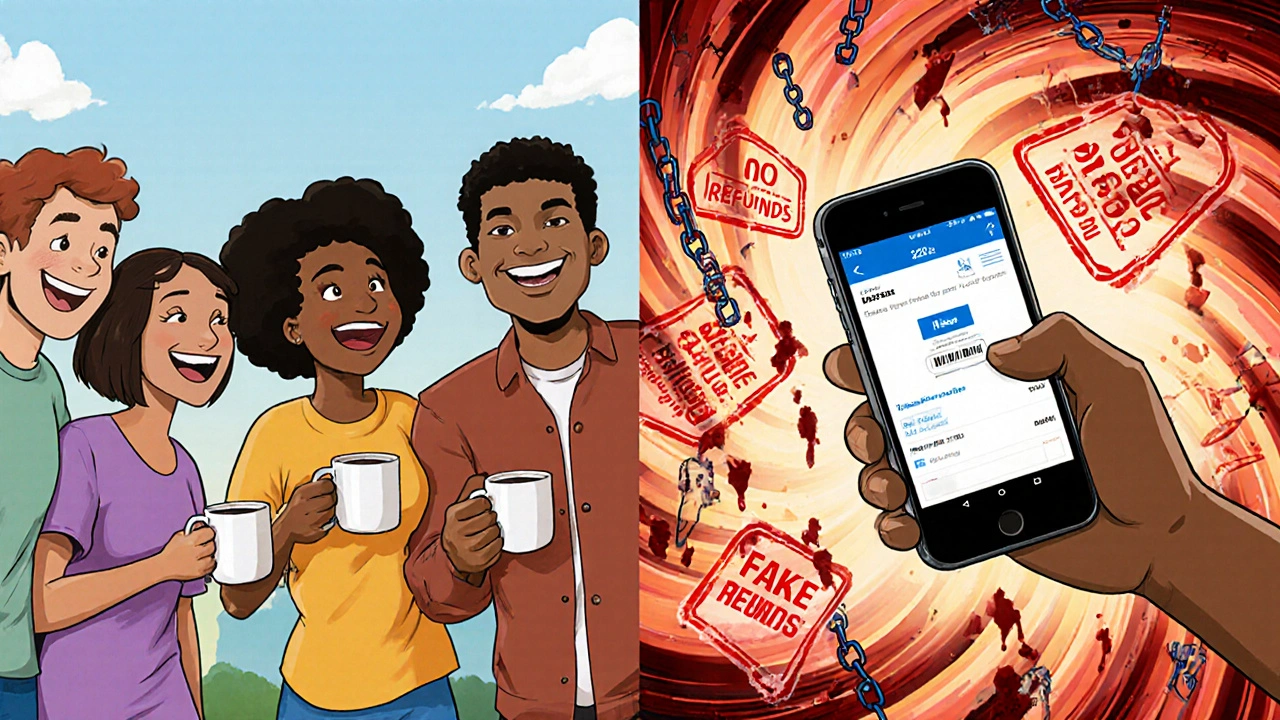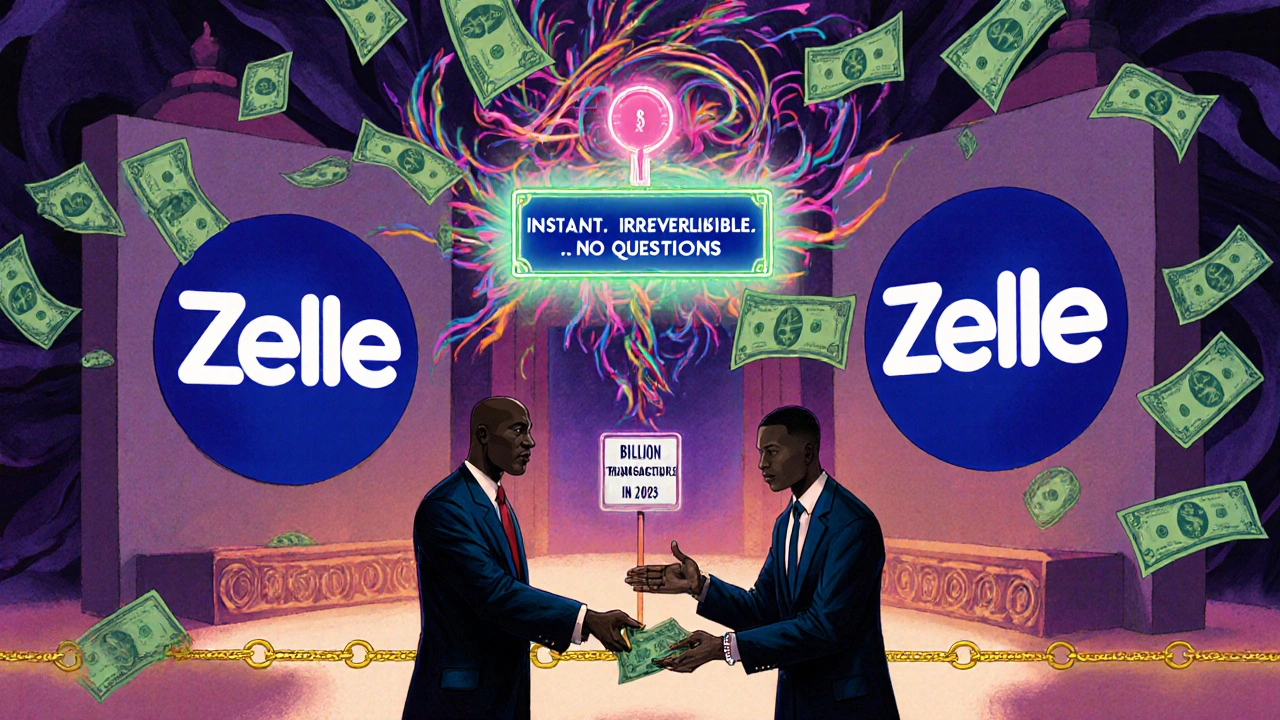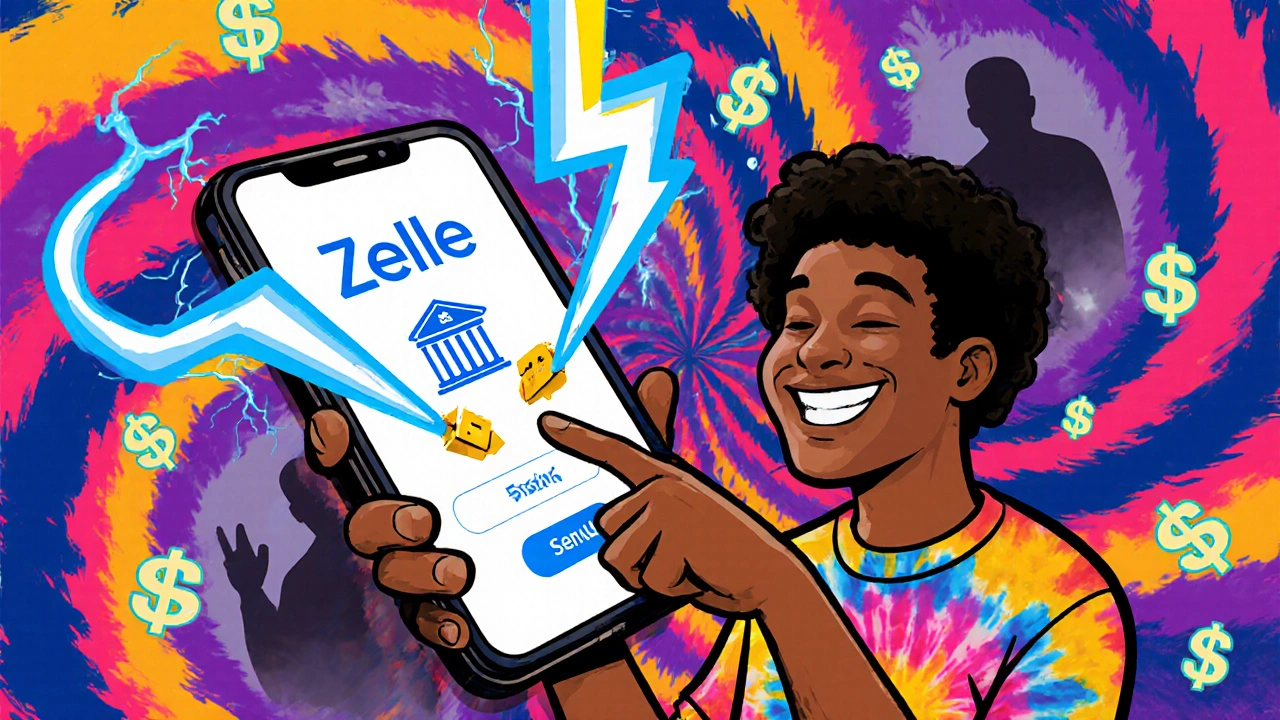Zelle Safety Checker
Is Your Zelle Payment Safe?
Zelle is fast and free, but it's designed for payments between people you know personally. Using it for strangers or online transactions is extremely risky. Answer these questions to see if your payment is safe.
Imagine sending money to a friend for dinner and seeing it hit their account before you even finish your coffee. That’s Zelle - fast, free, and built right into your bank’s app. But here’s the catch: if you send it to the wrong person, or worse, a scammer, there’s no undo button. No refunds. No safety net. Zelle isn’t just convenient - it’s dangerous if you don’t know how it really works.
How Zelle Actually Works
Zelle isn’t an app you download. It’s a network that connects your bank directly to other banks. When you send money, the funds move from your checking account to the recipient’s - no middleman, no balance to manage. It’s like wiring cash, but through your phone. The whole thing takes minutes, not days. That’s because Zelle runs on the same infrastructure banks use to clear checks and process direct deposits - just faster.
As of 2025, over 2,200 U.S. banks and credit unions support Zelle. That includes giants like Chase, Bank of America, Wells Fargo, and PNC - plus smaller regional banks. You don’t need a Zelle account. You just need to be a customer of a participating bank. To get started, log into your mobile banking app, find the Zelle option, and link your email or phone number. Done. It takes less than three minutes, according to Peoples Bank of Alabama’s internal data.
What makes Zelle different from Venmo or PayPal? Those services act like digital wallets. You load money in, hold it there, then transfer it out. Zelle skips that step. Your money never leaves your bank. That’s why it’s faster - and why it’s riskier.
Why Zelle Is So Popular
In 2023, Zelle processed $629 billion across 2.3 billion transactions. That’s more than Venmo and PayPal combined. Why? Because banks pushed it hard. After seeing users flock to Venmo and Cash App, the big banks teamed up to create Zelle as a way to keep control. They didn’t want to lose customers to third-party apps. So they made Zelle free, fast, and built right into the apps people already use.
People love it for simple reasons: no fees, instant transfers, and no need to remember usernames or passwords. Splitting rent? Sending birthday cash? Paying your kid for mowing the lawn? Zelle does it all in seconds. A Reddit user in Asheville summed it up: “I sent my sister $50 for concert tickets. She got it before I closed my app.”
For banks, Zelle is a win too. Customers who use Zelle log into their apps more often. One bank reported a 27% increase in mobile engagement after adding Zelle. It also cuts down on check usage - a 19% drop in some cases. That means less paper, less processing, and lower costs.
The Hidden Danger: No Protection Against Scams
Zelle’s speed is its biggest flaw. Once you hit “send,” the money is gone. No waiting. No reversal. No dispute process. That’s fine if you’re paying your cousin. It’s a disaster if you’re paying a stranger.
Scammers know this. They target people through fake job offers, fake rental listings, or even impersonating tech support. They’ll ask you to pay via Zelle because it’s “instant” and “secure.” But Zelle doesn’t protect you. Unlike PayPal, which offers buyer protection, Zelle treats every transaction like cash - final and irreversible.
In 2022, the Consumer Financial Protection Bureau found that Zelle accounted for 60% of all P2P payment fraud losses - even though it only handled about 20% of total P2P volume. That’s not a coincidence. It’s a design flaw.
One user on Reddit lost $2,850 after sending money to someone who claimed to be buying a used laptop. The buyer sent a fake screenshot showing “payment sent.” The user shipped the laptop. The money vanished. No recourse. The bank said, “We didn’t authorize the transaction - you did.”
Even worse, Zelle’s fraud policy changed quietly in 2023. Now, they *might* refund you - but only if the transaction was under $750 and you provide police reports, bank statements, and proof you were scammed. And even then, it’s not guaranteed. Most users never get their money back.

Zelle vs. Venmo vs. PayPal
Here’s how Zelle stacks up against the competition:
| Feature | Zelle | Venmo | PayPal |
|---|---|---|---|
| Transfer Speed | Minutes | 1-3 days (standard), instant for fee | 1-3 days (standard), instant for 1% fee |
| Fees for Consumers | None | None for bank transfers, 3% for credit cards | None for bank transfers, 3% for credit cards |
| Fraud Protection | None | Yes, for eligible purchases | Yes, buyer protection for goods/services |
| International | No | No | Yes |
| Requires Separate App | No - built into bank app | Yes | Yes |
| Transaction Limits | Varies by bank (typically $2,500/day) | Varies by bank (typically $4,999/week) | Varies by account (up to $10,000/day) |
PayPal and Venmo have clear rules for disputes. If you didn’t get the item, or it was fake, you can file a claim. Zelle doesn’t offer that. If you’re paying someone you don’t know - even for a car, a laptop, or a service - you’re gambling. And Zelle is the casino.
What Changed in April 2025
In April 2025, Zelle shut down its standalone app. That’s right - the app you used to download? Gone. Now, you can only use Zelle through your bank’s mobile app or website. Early Warning Services, the company behind Zelle, said this move was for “enhanced security.”
It makes sense. The standalone app was a vulnerability. People used it without understanding their bank’s rules. They’d send money without realizing the recipient wasn’t enrolled. They’d ignore warnings. Now, banks control the experience. They can show warnings, verify identities, and limit access.
But it also means you’re stuck with whatever your bank decides to show you. Some banks give you clear fraud alerts. Others? Barely a notice. You’re at the mercy of your bank’s customer service - and most banks are terrible at handling Zelle fraud.
Who Should Use Zelle - And Who Should Avoid It
Zelle is perfect for:
- Splitting bills with roommates or friends
- Repaying family members for shared expenses
- Sending gifts to people you know well
- Paying your babysitter or dog walker you’ve known for years
Zelle is dangerous for:
- Buying anything from strangers online
- Payroll or freelance payments
- Any transaction where you don’t know the person face-to-face
- Business payments (unless your bank offers Zelle Business, which is still rare)
Bankrate’s 2023 survey found 68% of Zelle users only send money to people they know personally. That’s the smartest rule you can follow.

What’s Next for Zelle
Zelle isn’t slowing down. Analysts expect it to hit $950 billion in transactions by 2026. But it’s not without competition. The Federal Reserve launched FedNow in 2025 - a real-time payment system that’s open to all banks, not just the big ones. It’s faster, more transparent, and built with fraud protections in mind.
Some banks are already testing Zelle for small business payments. PNC ran a pilot in 2024 that processed $142 million in commercial transactions. But even there, the lack of buyer protection remains a problem.
The Consumer Financial Protection Bureau is pushing for new rules. In February 2024, they proposed requiring all P2P networks to investigate fraud claims fairly. If that happens, Zelle might have to change. But until then, you’re on your own.
How to Use Zelle Safely
If you’re going to use Zelle, follow these rules:
- Only send money to people you know and trust in real life.
- Never use Zelle to pay someone you met online - even if they seem legit.
- Double-check the email or phone number before hitting send.
- Don’t rely on screenshots. Fraudsters fake them all the time.
- If something feels off, stop. Walk away.
- Know your bank’s fraud policy. Ask them: “What happens if I get scammed?”
And if you’ve already been scammed? Call your bank immediately. File a police report. Contact the FTC. But don’t expect your money back. Zelle doesn’t care about your story. It only cares that you authorized the transfer.
Is Zelle safe to use?
Zelle is safe only if you’re sending money to someone you know personally - like family or close friends. It’s not safe for paying strangers, online sellers, or businesses. There’s no buyer protection, and once you send money, you can’t get it back. That’s not a bug - it’s how Zelle was designed.
Can I get my money back if I get scammed on Zelle?
Almost never. Zelle treats transactions like cash. If you were tricked, your bank may help you file a report, but they won’t refund you unless the transaction was under $750 and you meet strict documentation requirements. Most users never recover their money. The best defense is prevention.
Do I need to download the Zelle app?
No. Zelle shut down its standalone app in April 2025. You can only use Zelle through your bank’s mobile app or website. If someone tells you to download the Zelle app, it’s a scam. Always use your bank’s official app.
How is Zelle different from Venmo?
Venmo is a social payment app with a balance system - you load money in, then send it out. Zelle moves money directly between bank accounts. Venmo offers buyer protection for purchases. Zelle doesn’t. Venmo takes 1-3 days for standard transfers. Zelle is instant. But Zelle’s speed comes with zero safety net.
Can I use Zelle internationally?
No. Zelle only works between U.S. bank accounts. You can’t send money to someone in Canada, Mexico, or Europe. If someone asks you to pay them via Zelle from overseas, it’s a scam.
What banks support Zelle?
Over 2,200 U.S. banks and credit unions support Zelle, including Bank of America, Chase, Wells Fargo, PNC, and U.S. Bank. Most major banks do. Smaller credit unions may not. Check your bank’s app - if you see Zelle under “Send Money,” you’re covered.
Final Thought: Speed Has a Price
Zelle is the fastest way to move money between friends. But it’s also the most dangerous tool in your financial toolkit if you use it wrong. Banks love it because it keeps you locked into their apps. Scammers love it because it’s irreversible. You? You need to be smarter than both.
Use Zelle like cash - only with people you know. If you’re paying someone you’ve never met, use PayPal or Venmo. Pay the 3% fee. Sleep better at night. That’s not a cost. That’s insurance.
